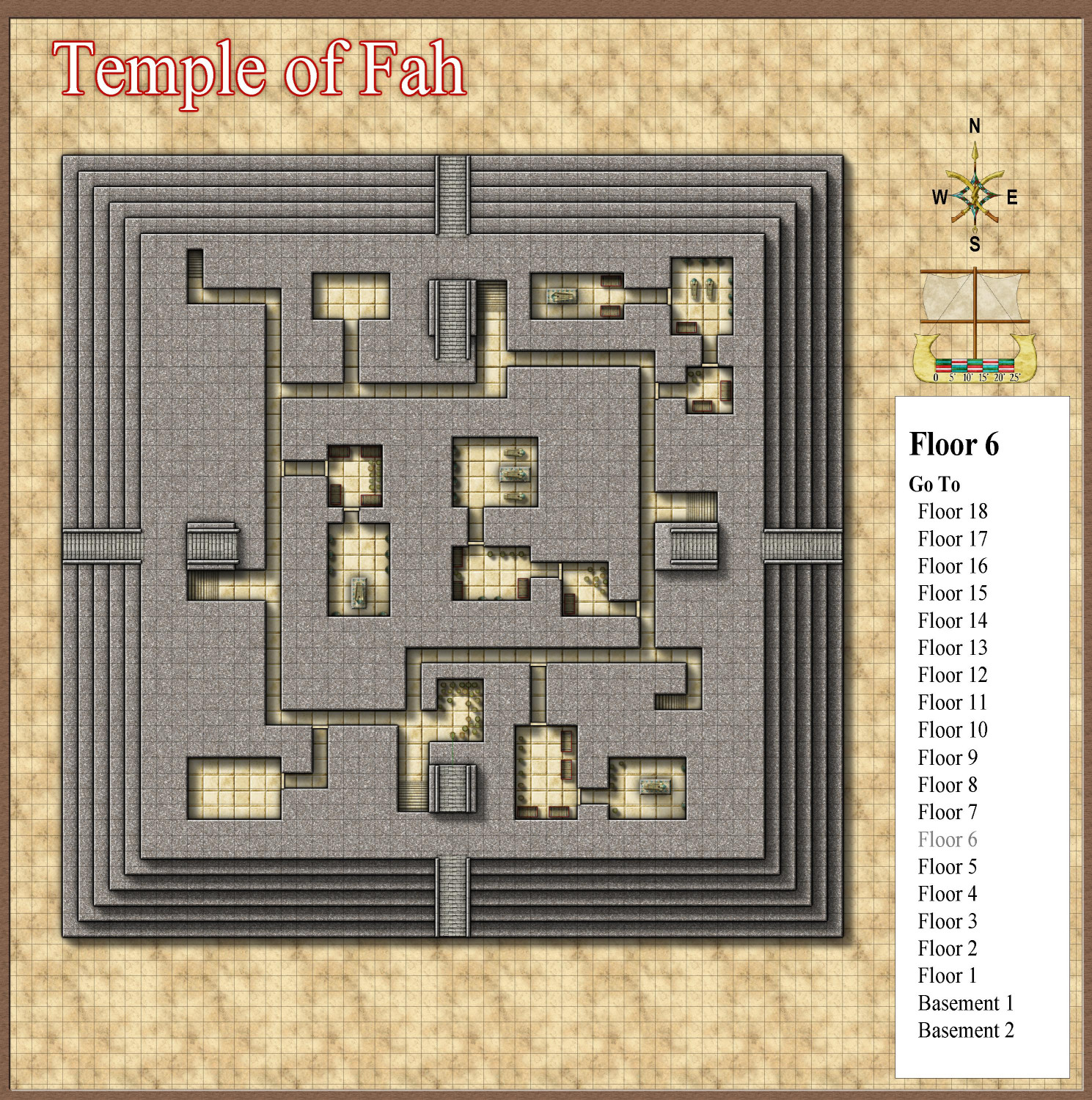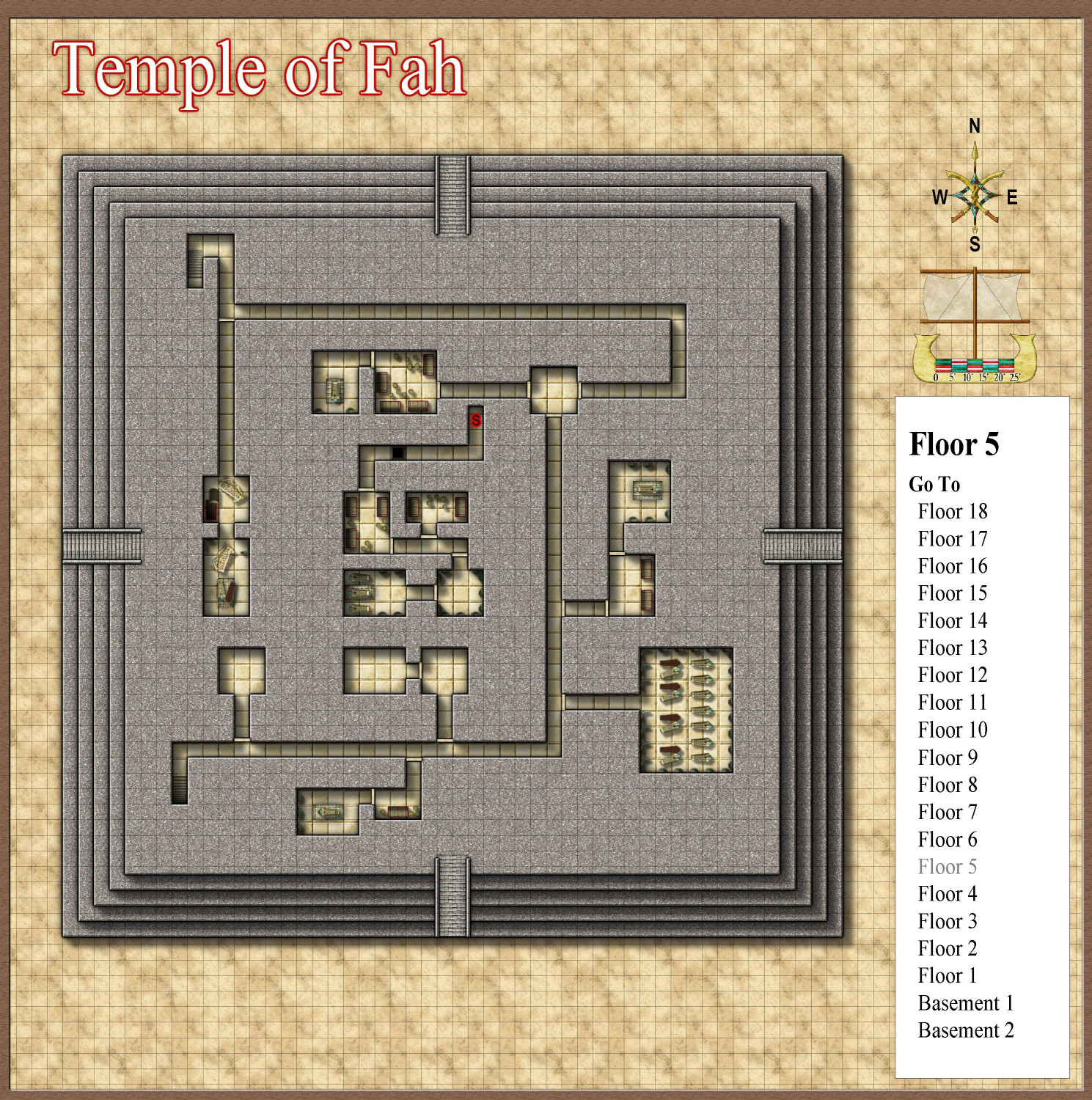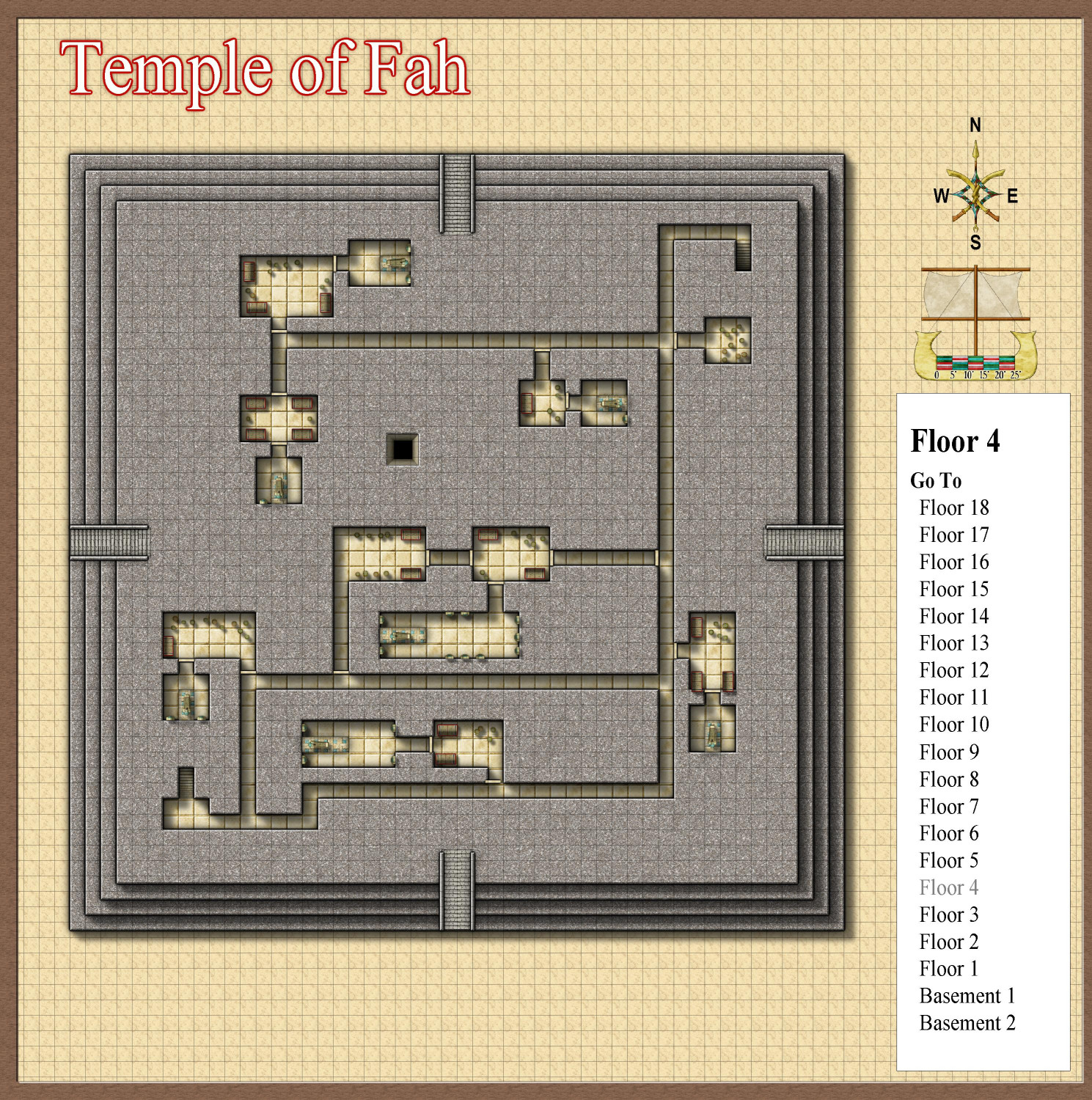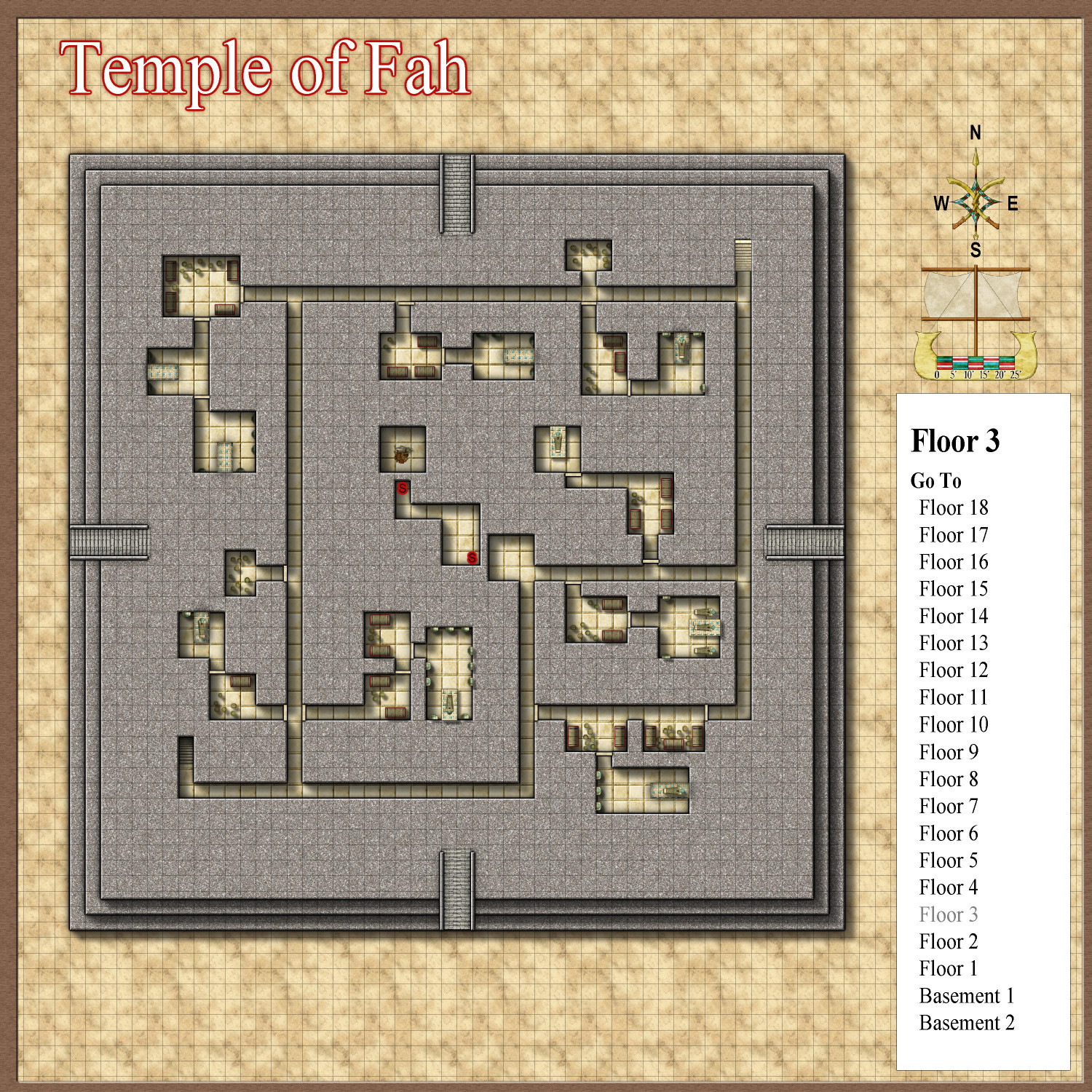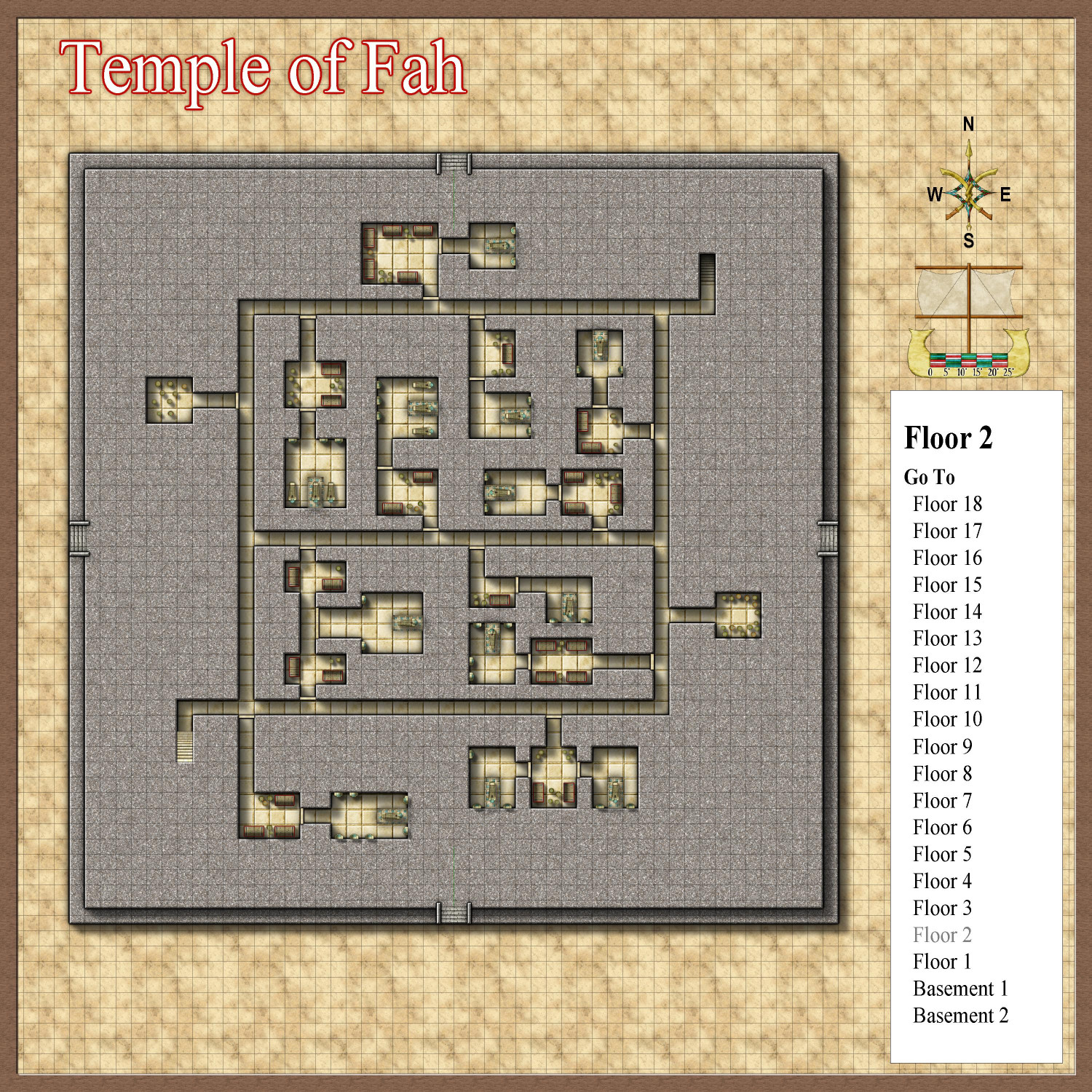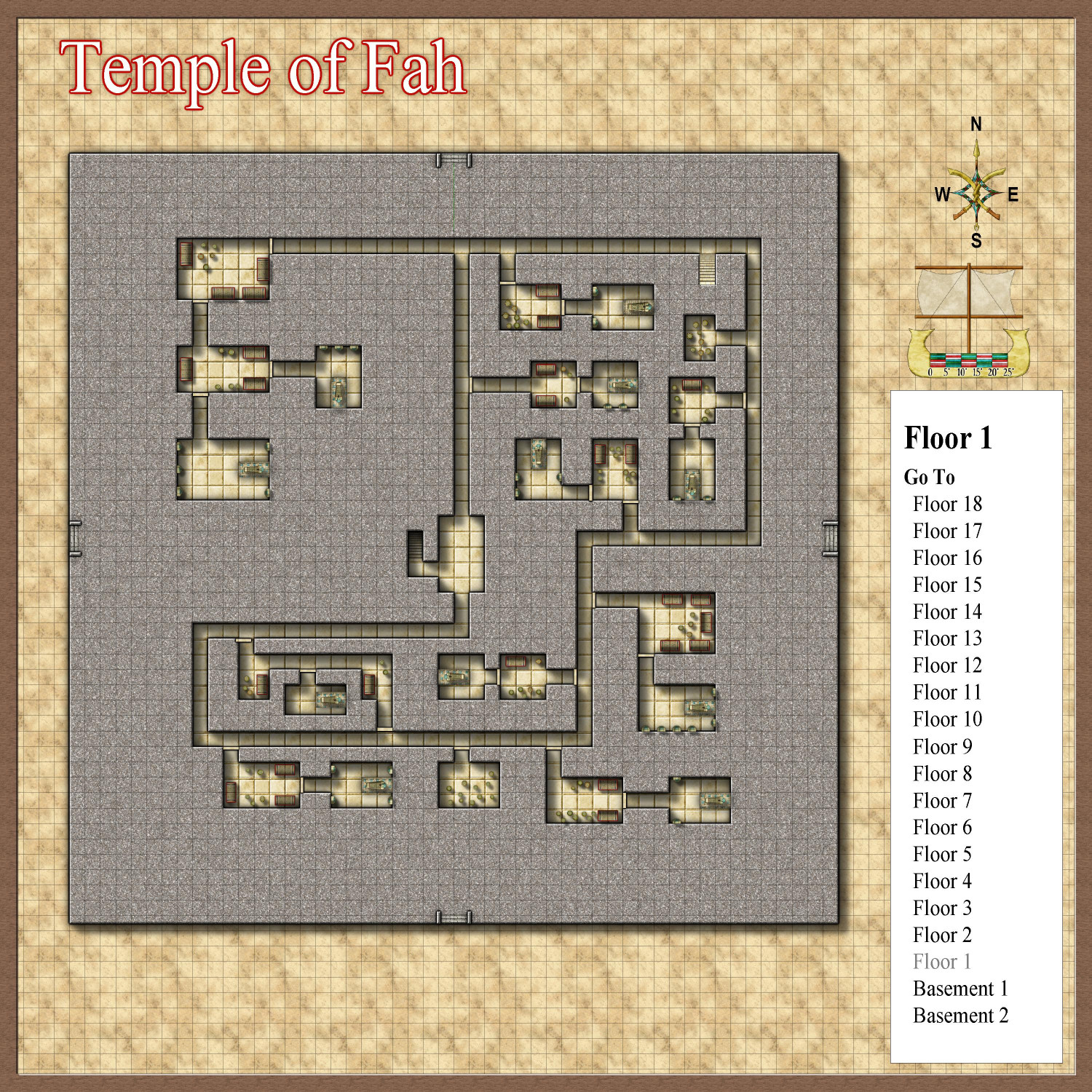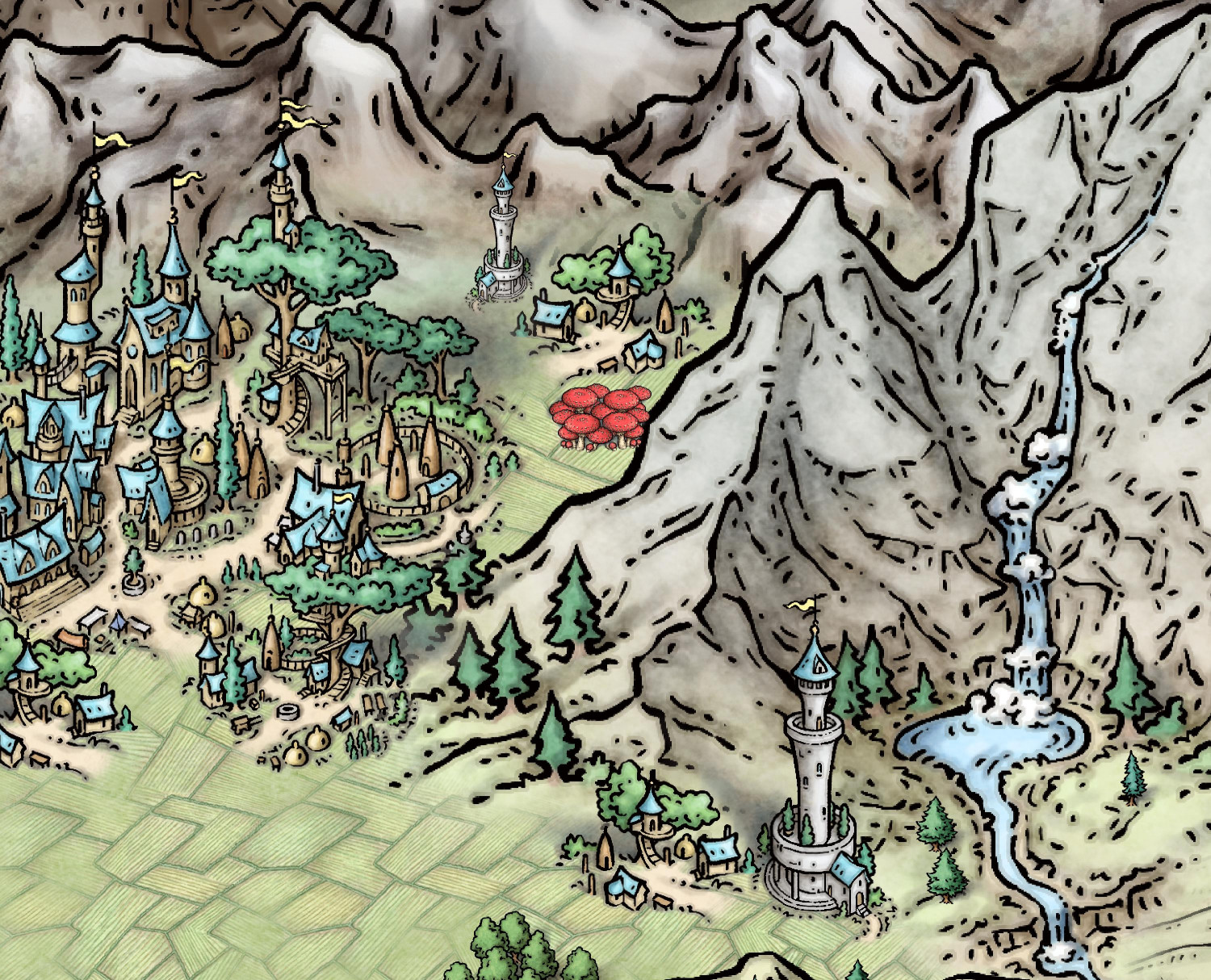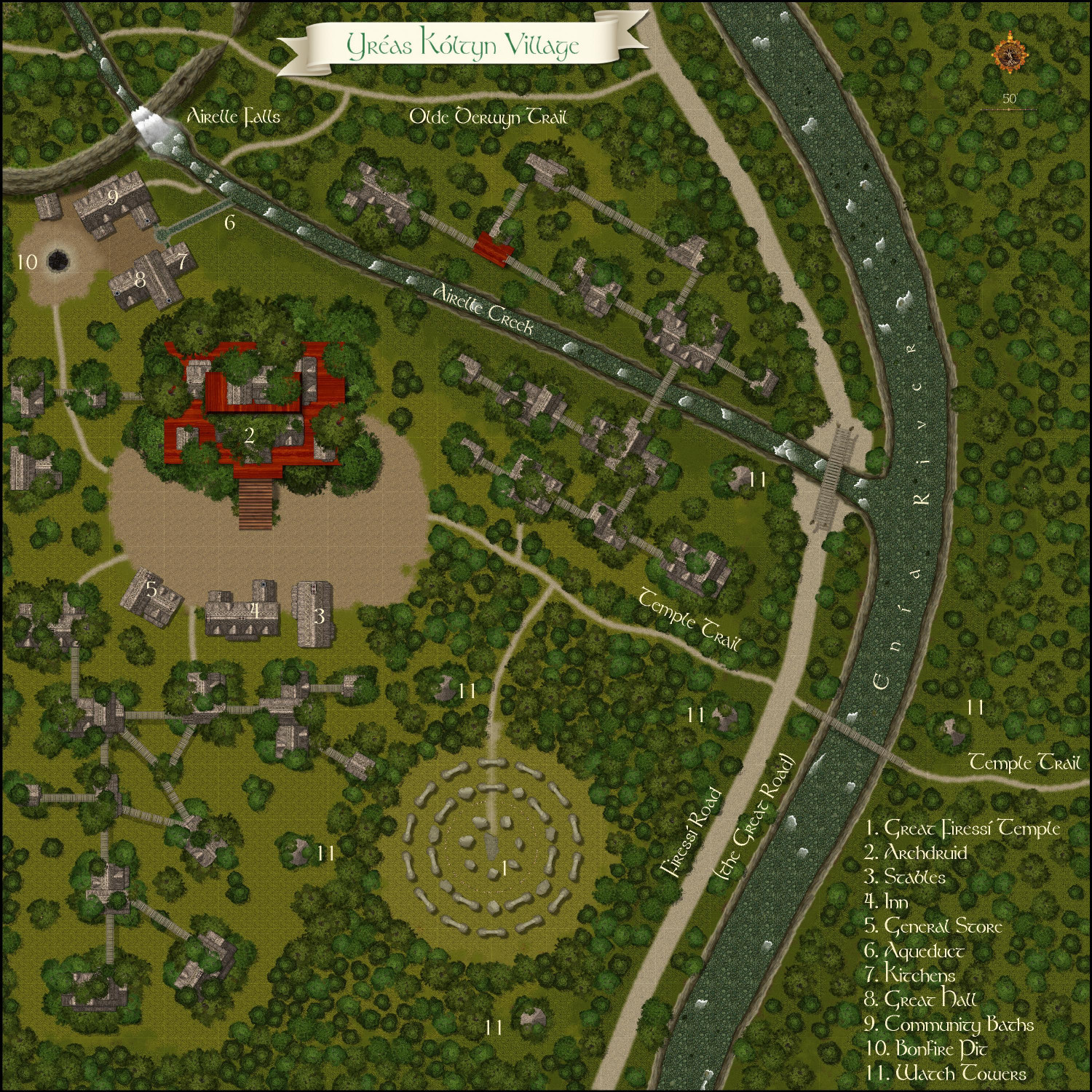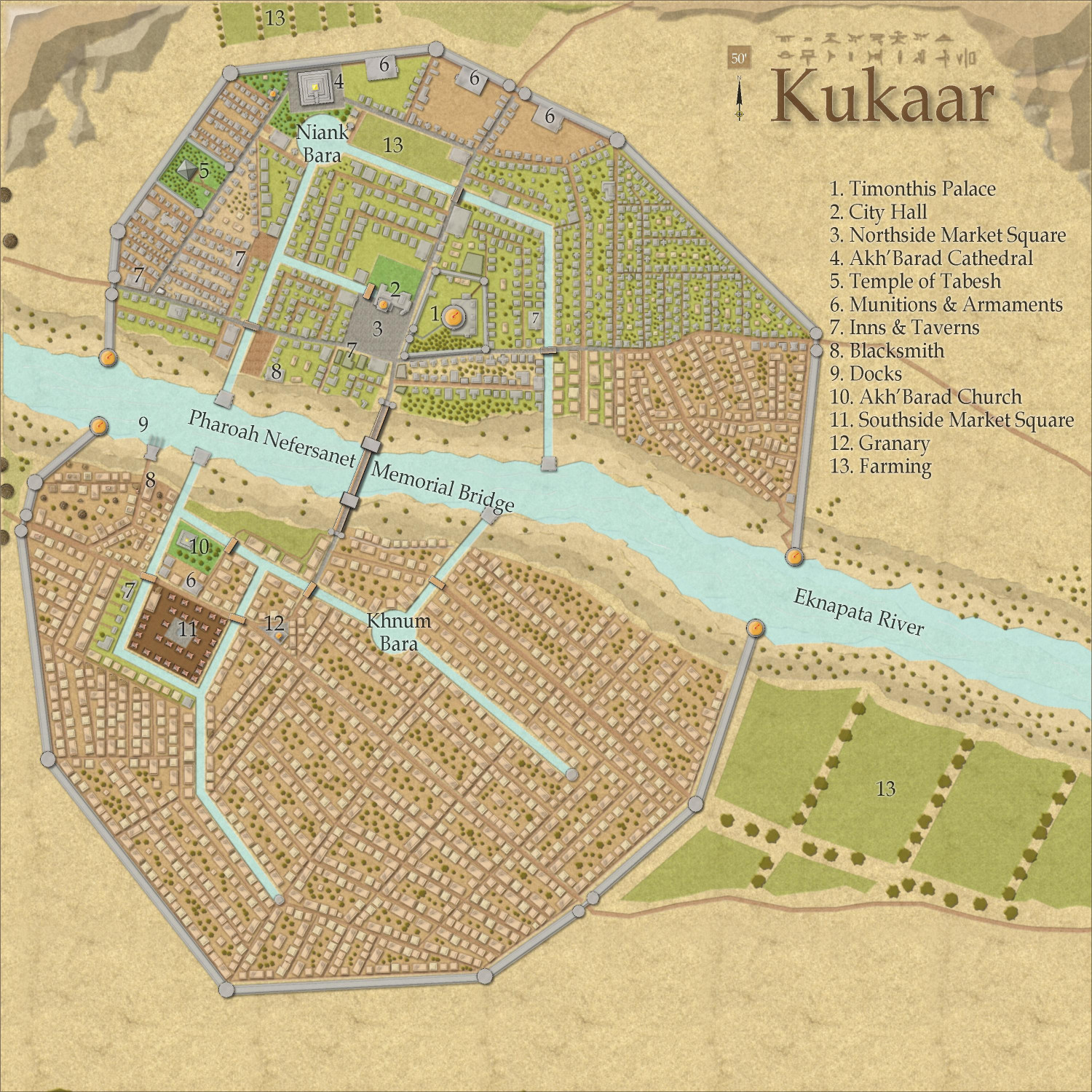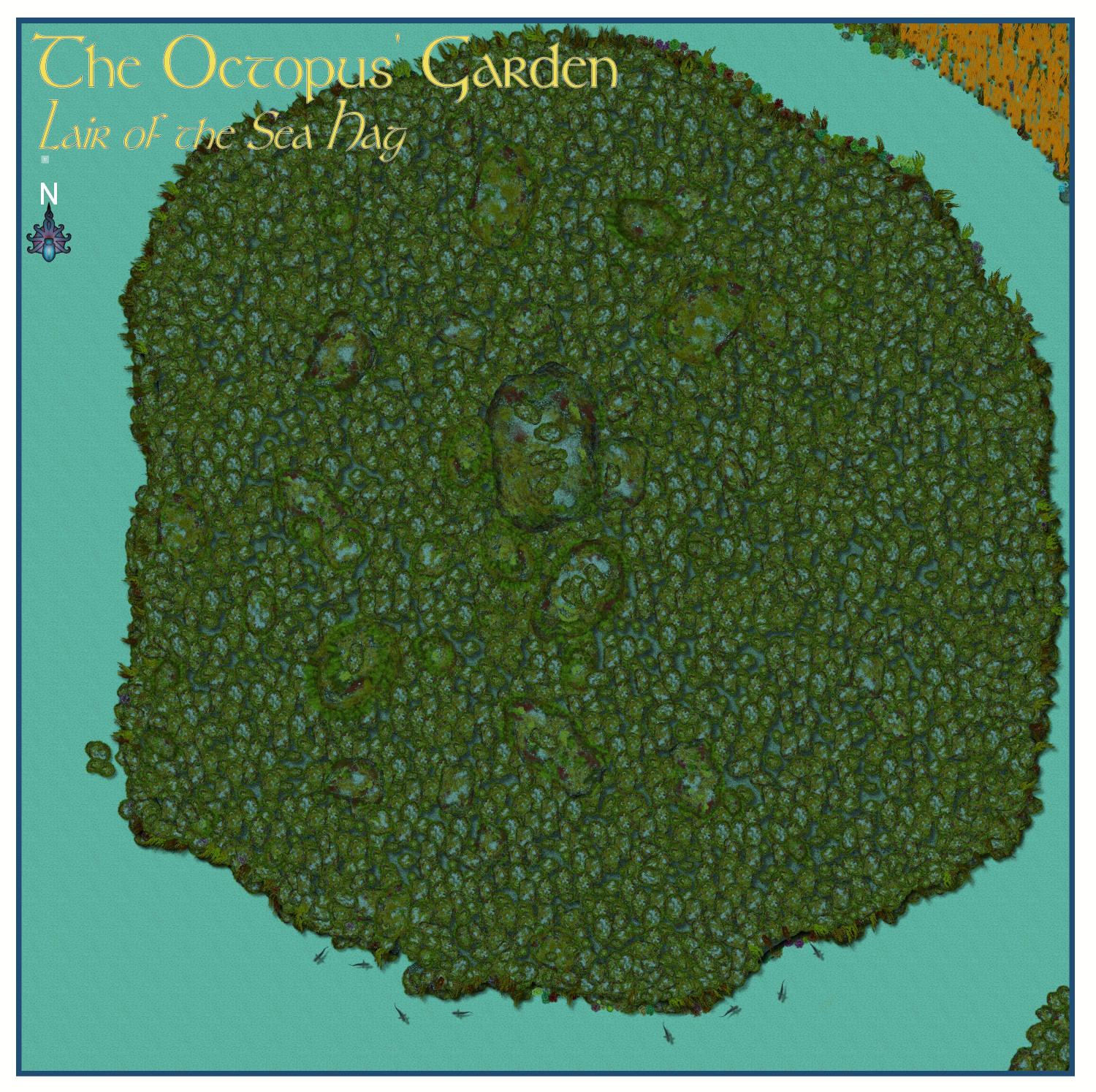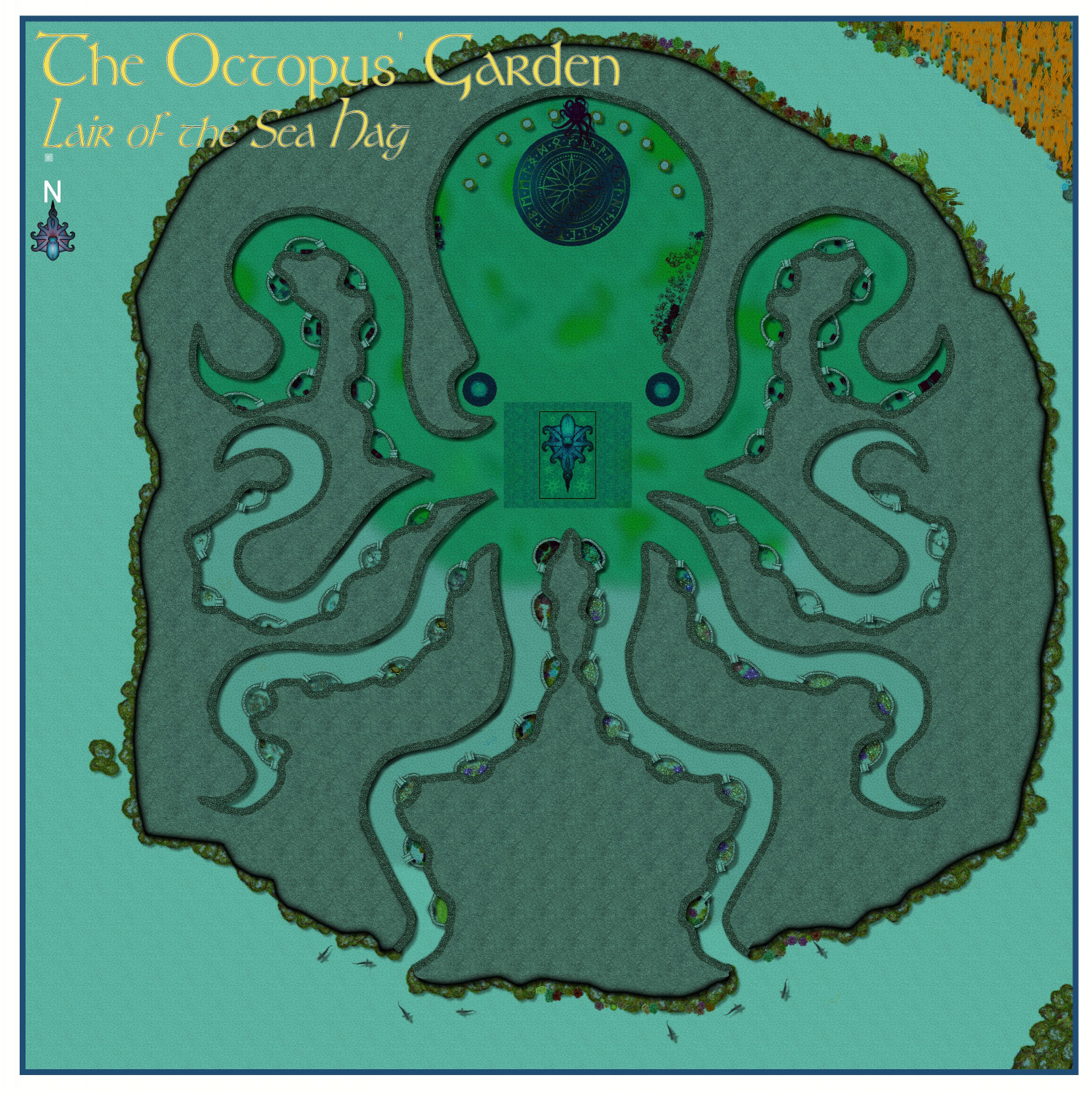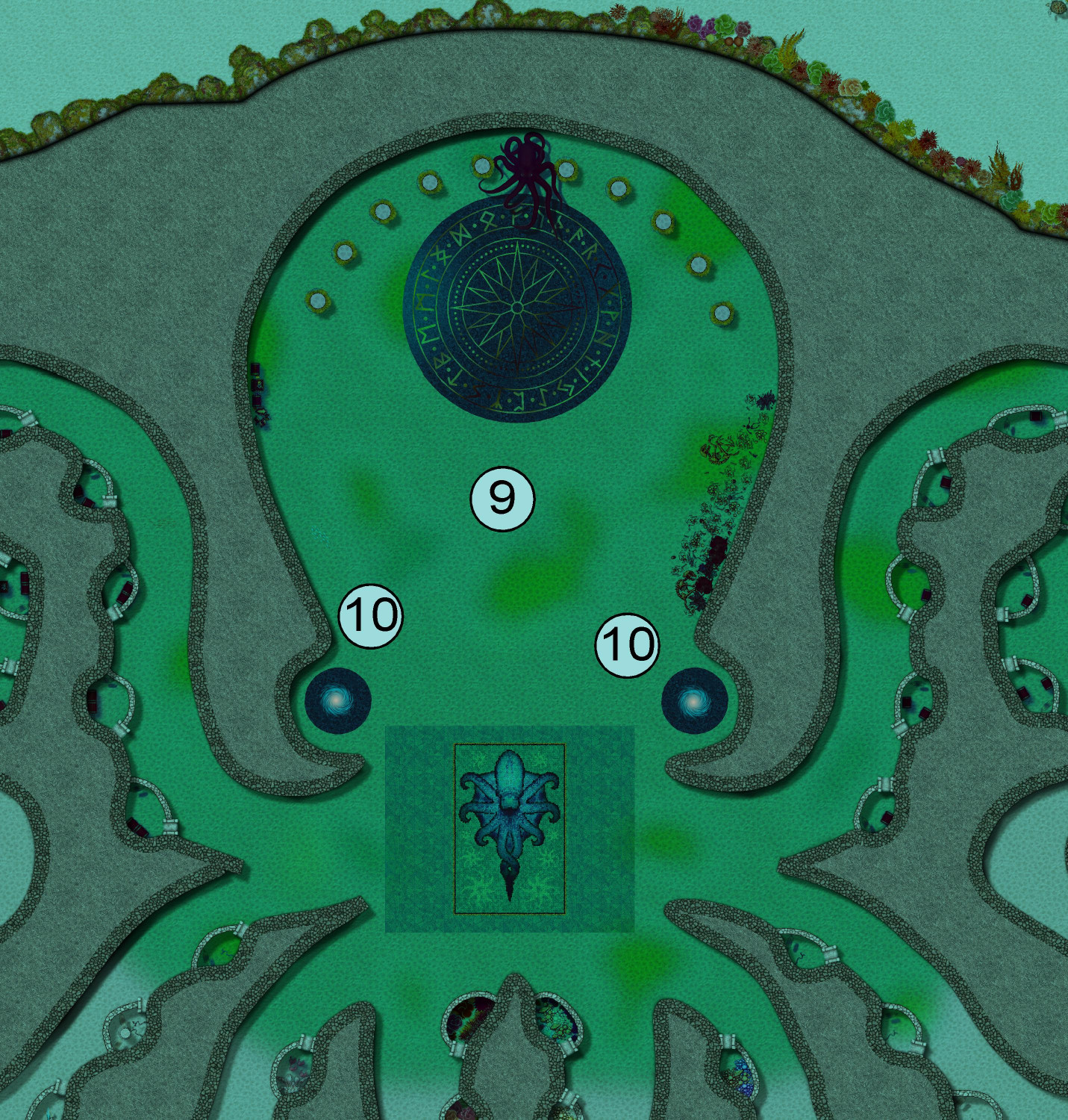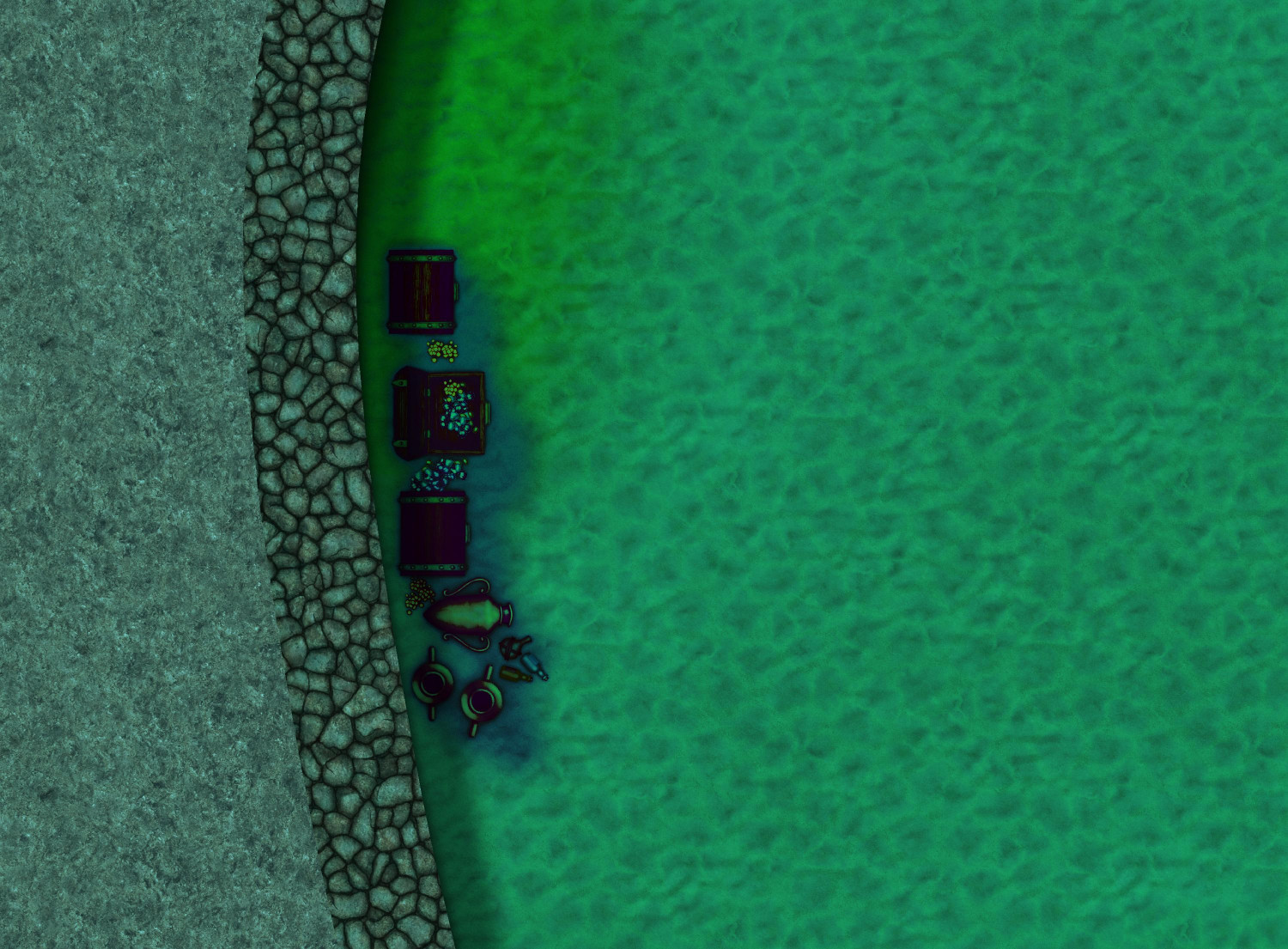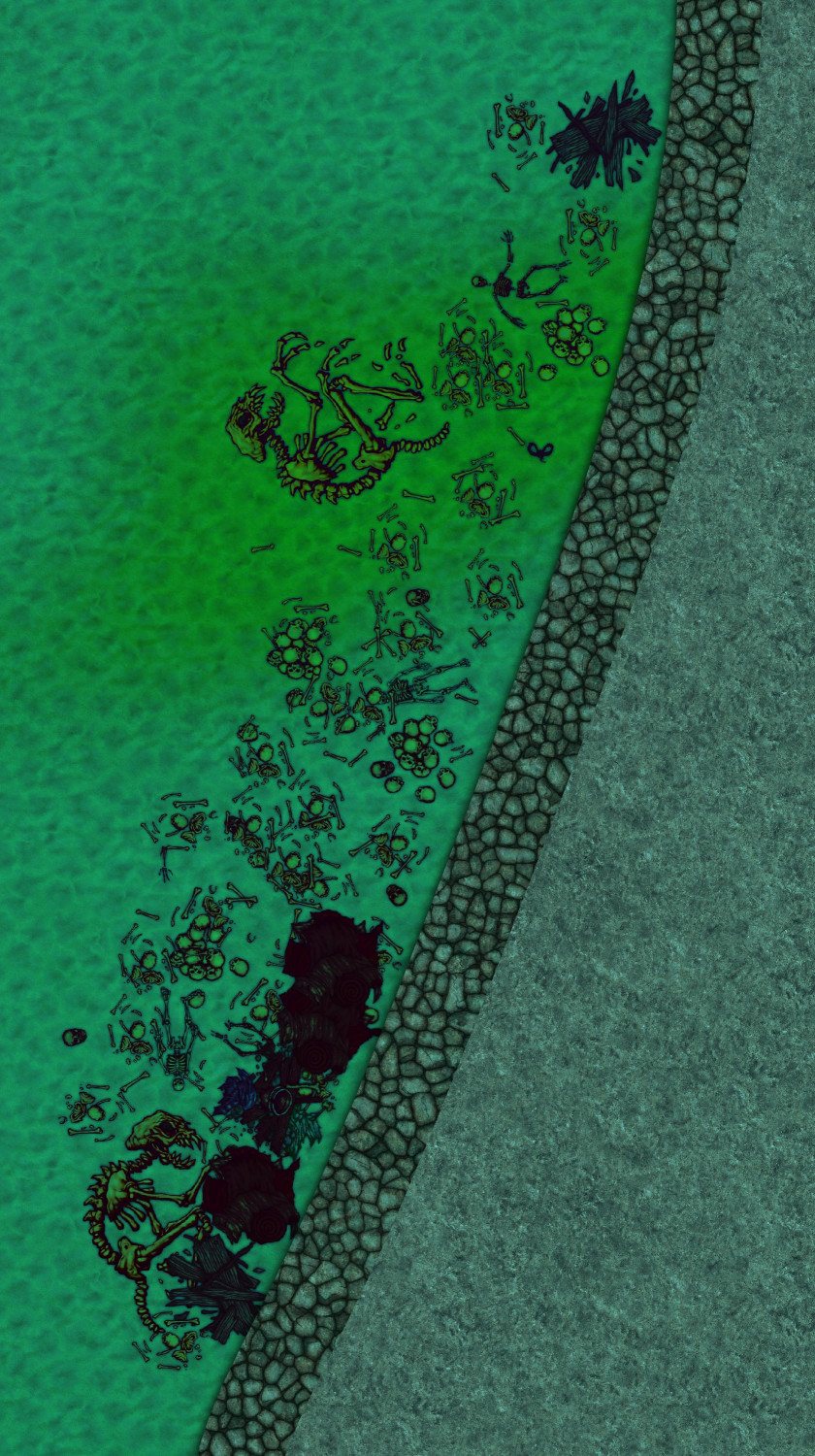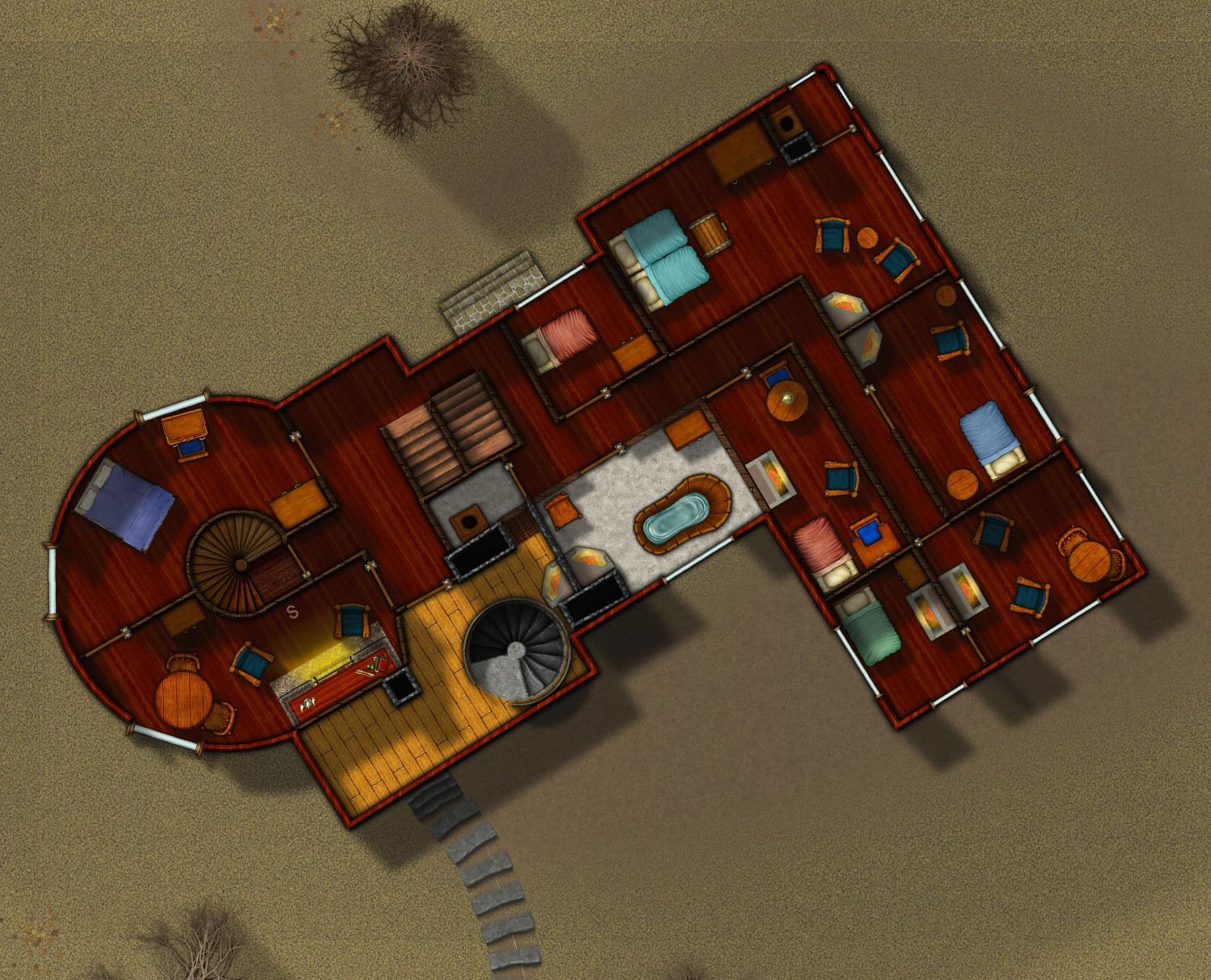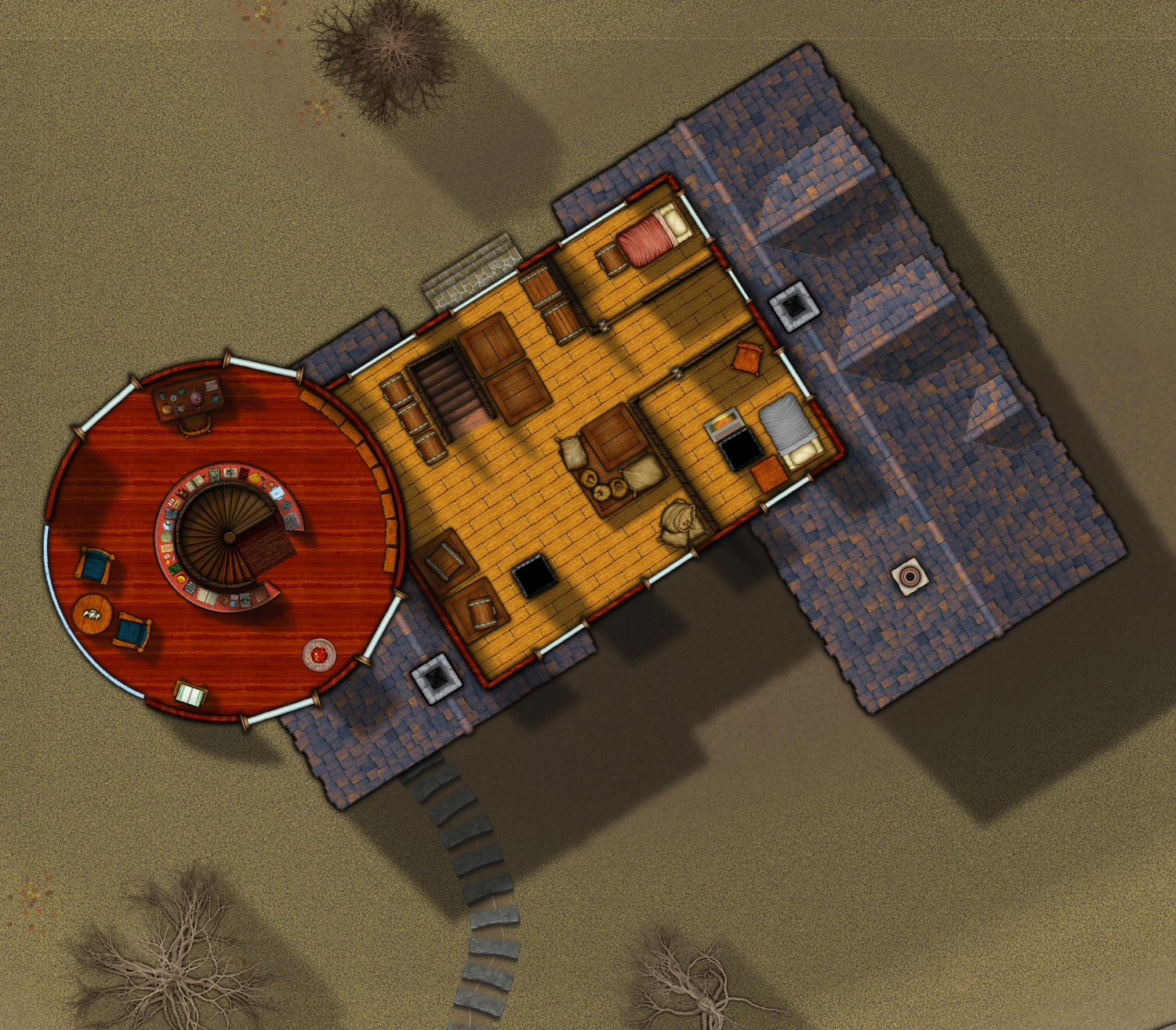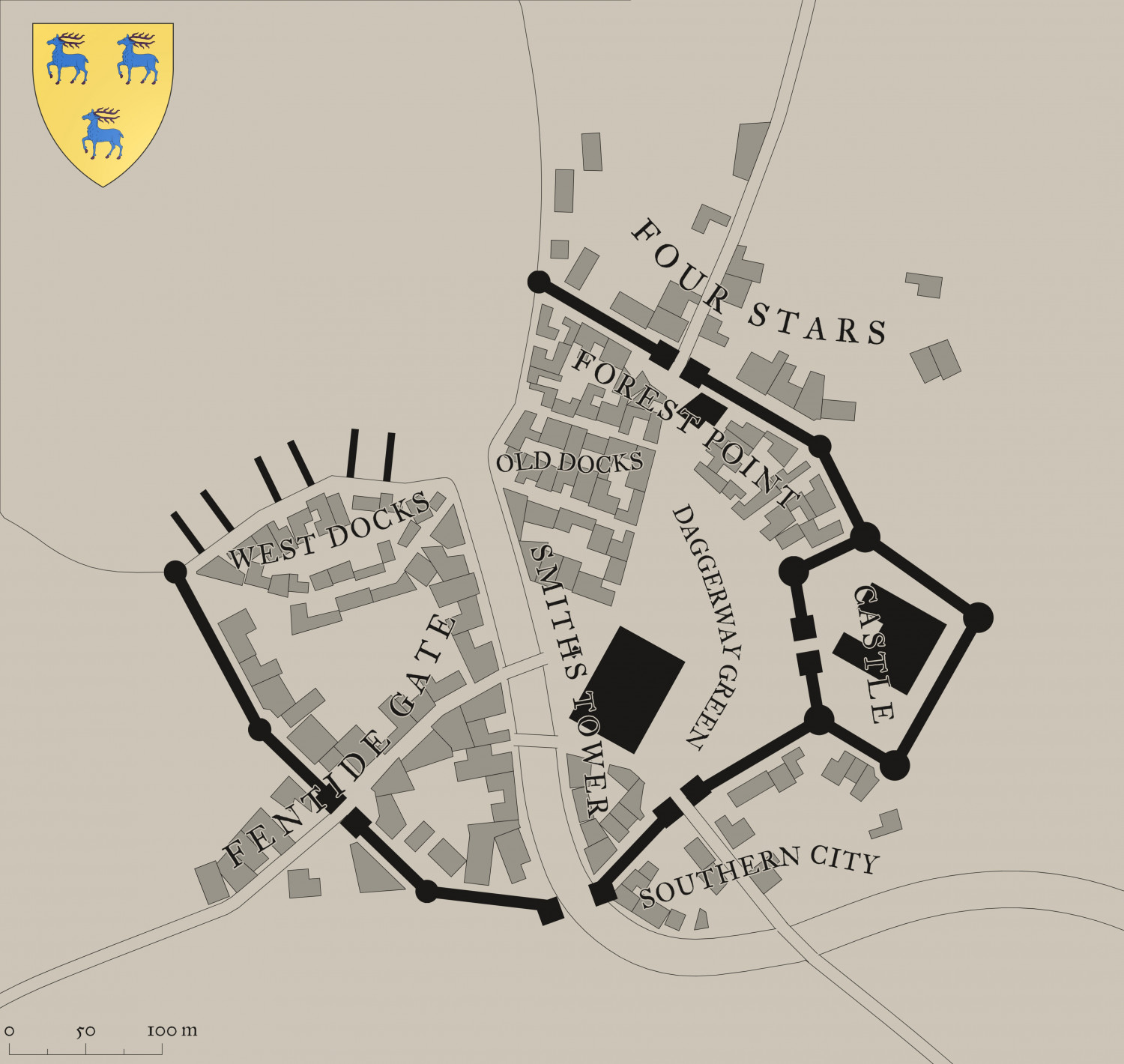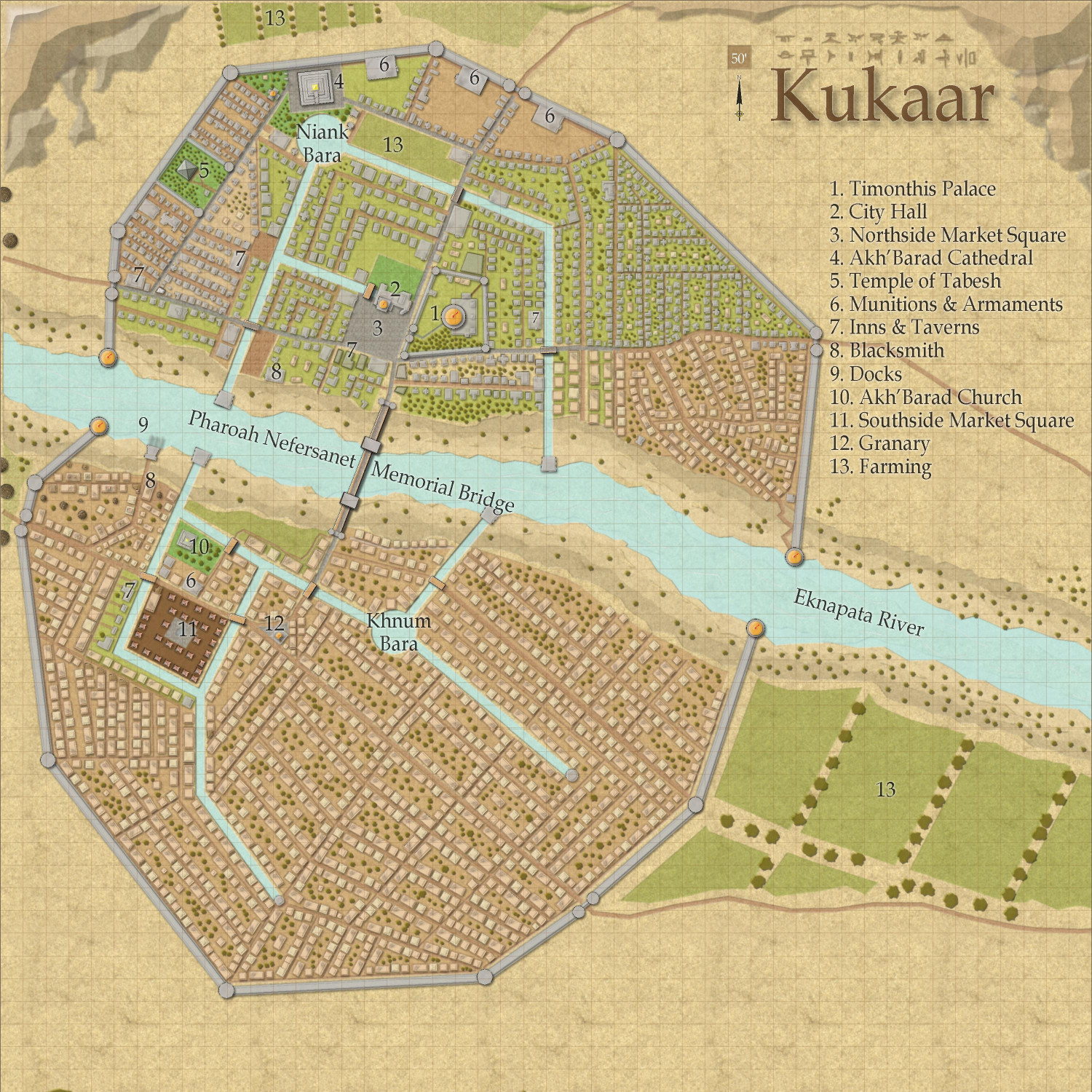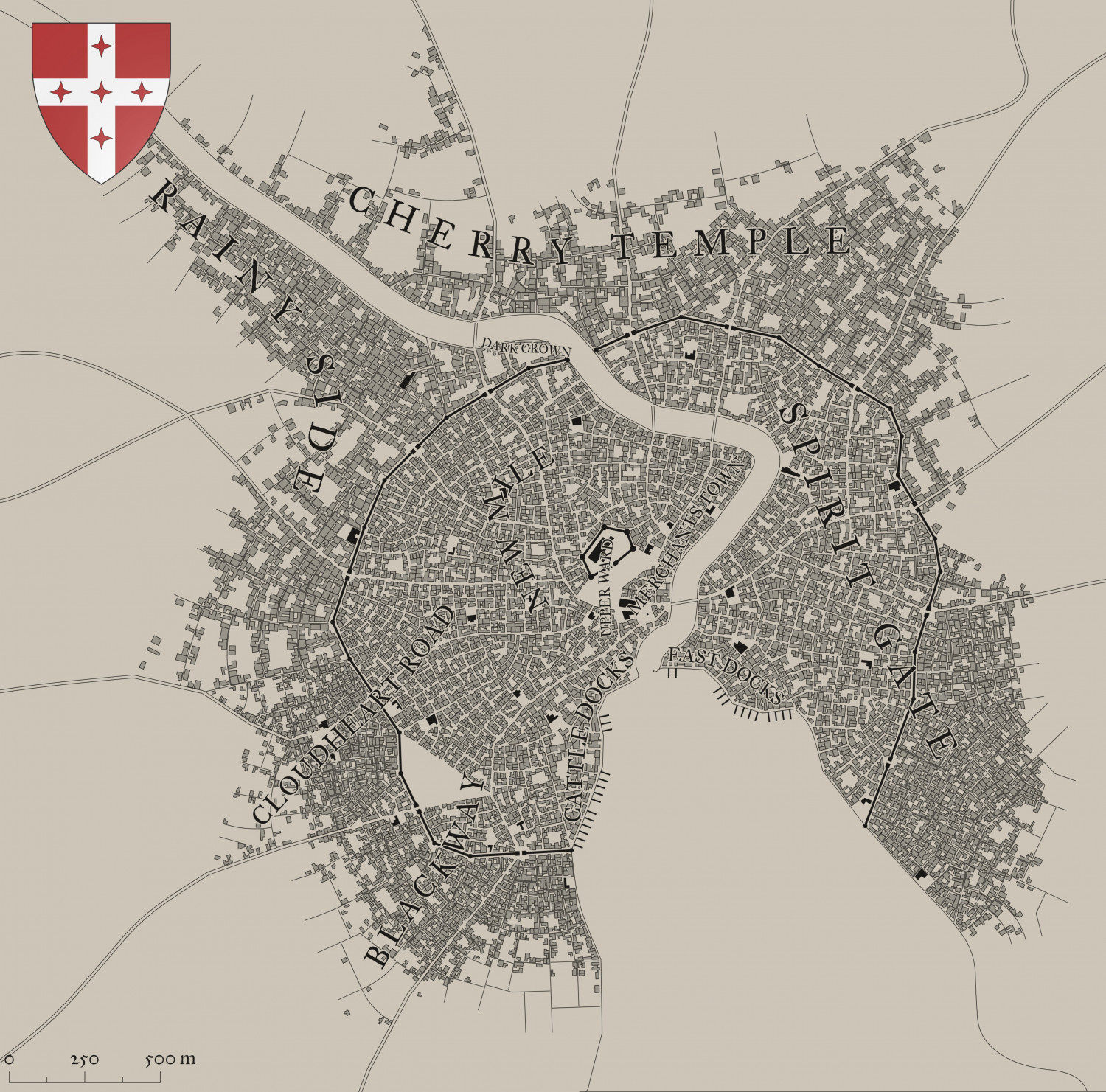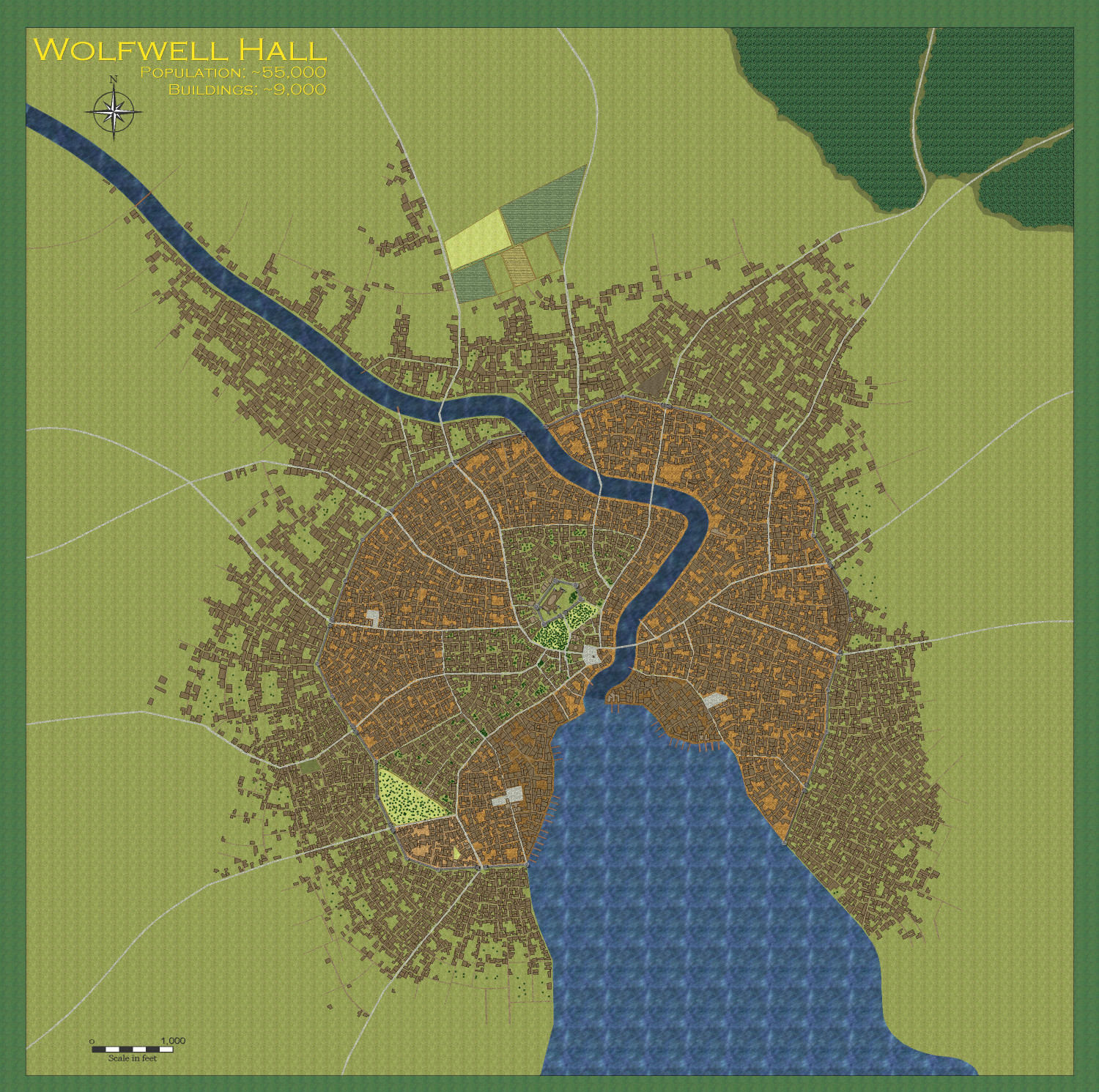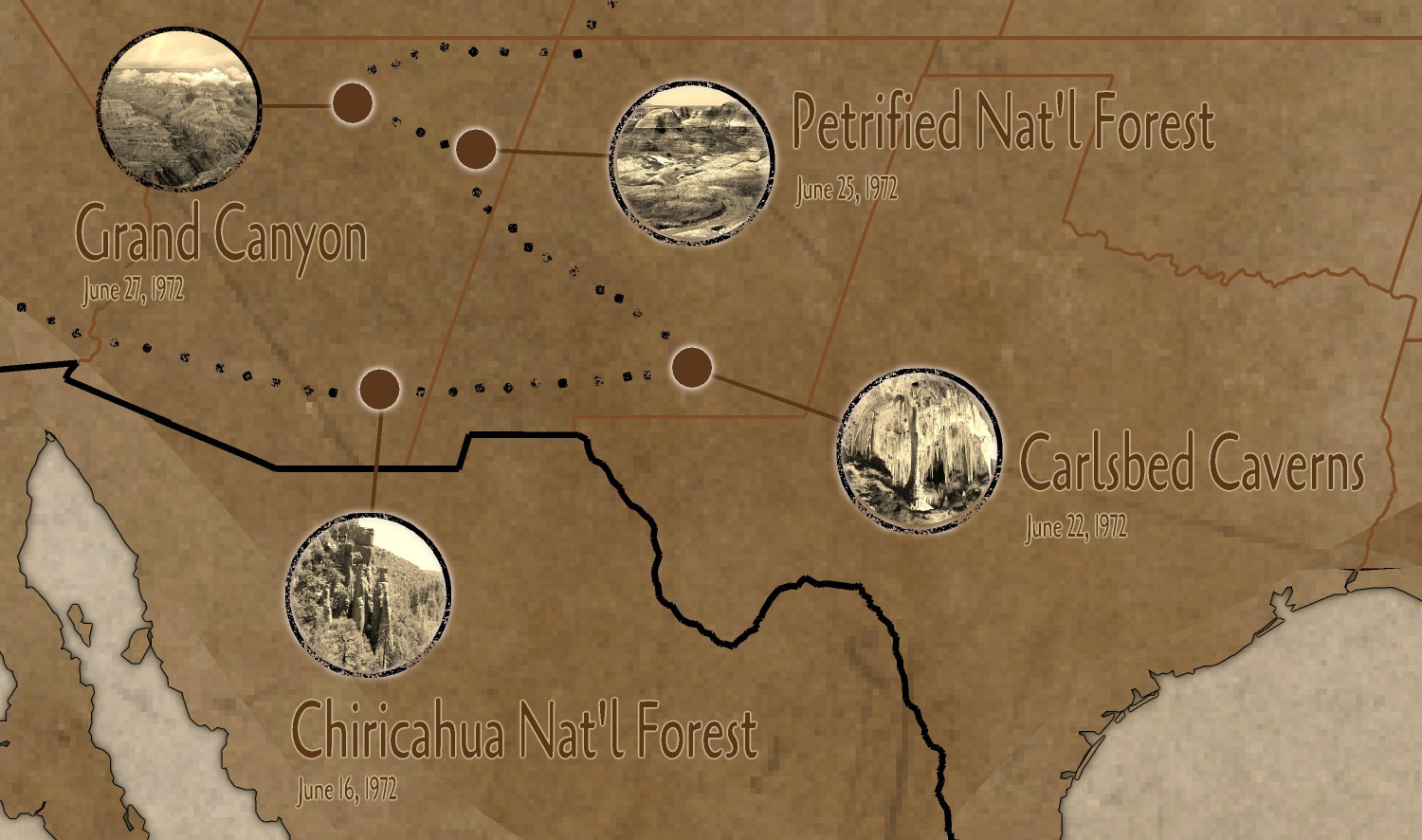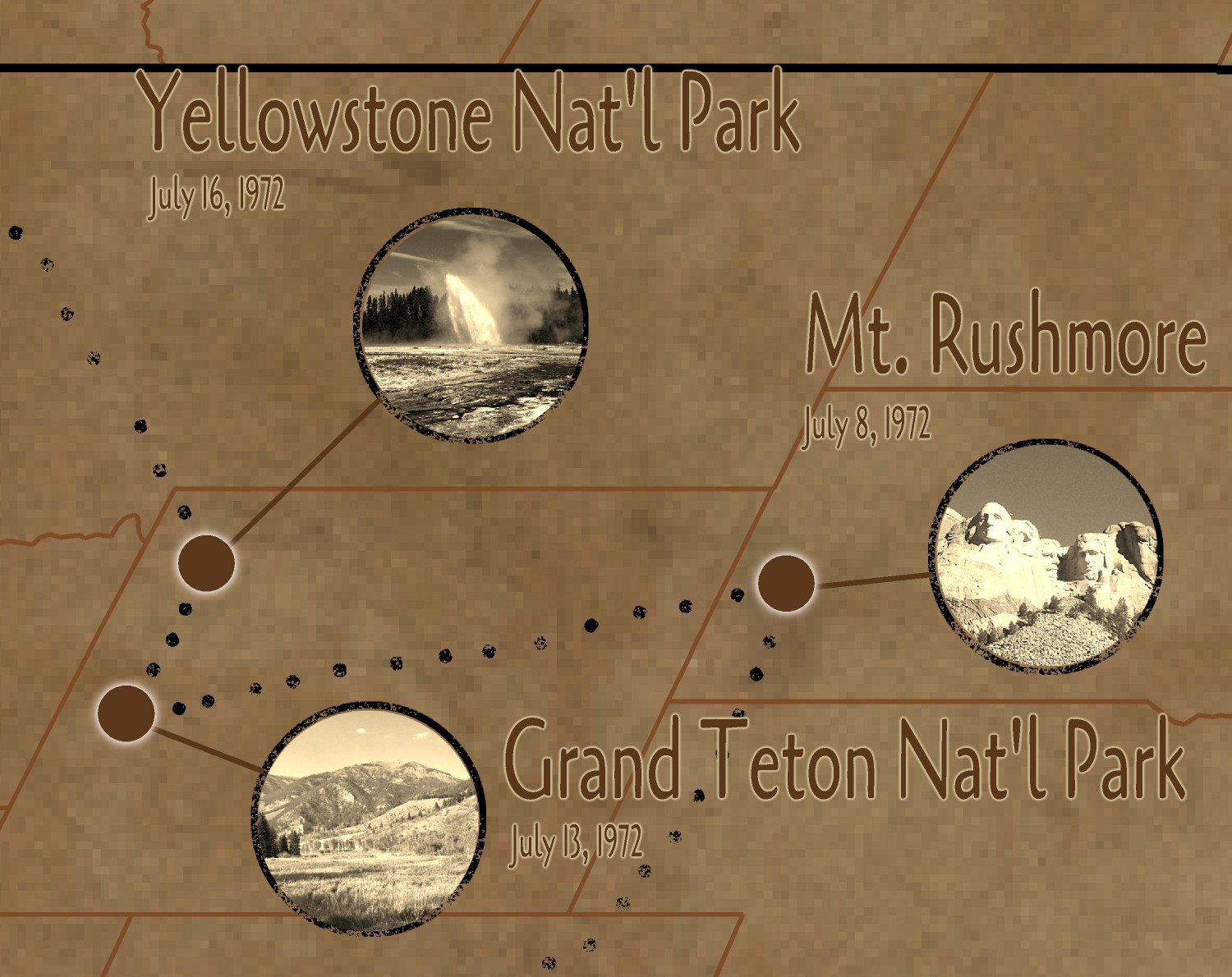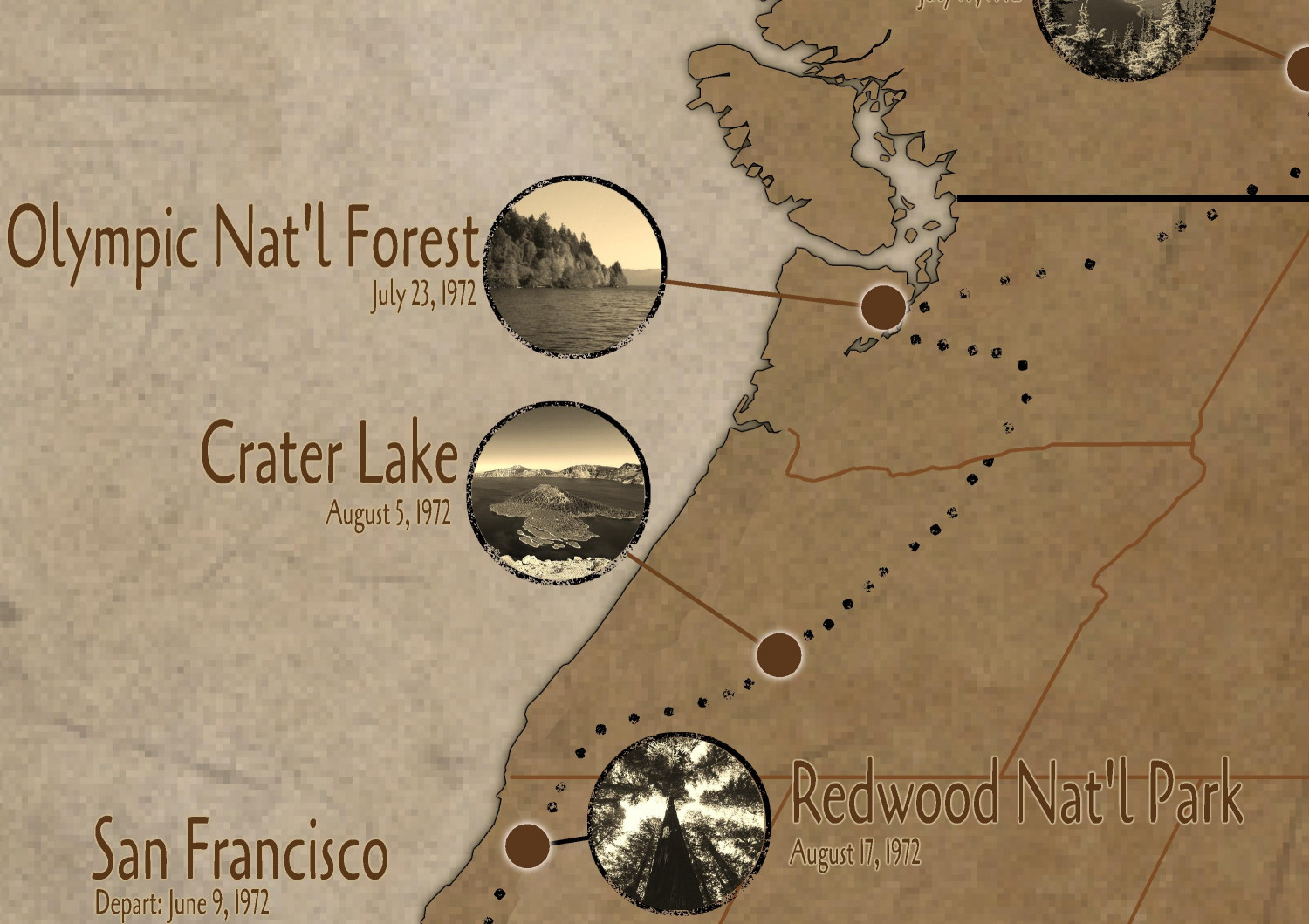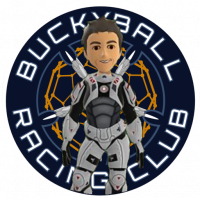Royal Scribe
Royal Scribe
About
- Username
- Royal Scribe
- Joined
- Visits
- 8,807
- Last Active
- Roles
- Member
- Points
- 3,198
- Birthday
- February 5, 1968
- Location
- San Francisco, California
- Real Name
- Kevin
- Rank
- Mapmaker
- Badges
- 16
Reactions
-
Community Atlas submissions: the Gold Coast (Doriant) and areas within it
I am going to use this thread to officially submit my maps for the Gold Coast region of Doriant. I will have separate Work-in-Progress threads for feedback on maps as I am working on them, and then will use this thread for the official submissions so they are easy for Remy to find. I know Remy isn't processing new submissions until the contest ends, but this will queue up my future submissions for later this fall or winter, and it also provides a home for some of the villages I want to submit for the contest.
The first submission is ready! It's a 1000 x 1000 mile section on the western side of Doriant.
Here's a markup of the parent map to put it in context (the blue border represents the area I'm calling the Gold Coast.
And here is the Gold Coast with all labels but without political borders shown:
Here is the FCW file, along with a PDF description and a plain text description. (I stripped out accents and special characters in the plain text file.)
Primary Style: Annual Spectrum Overland
Toggles: "Borders (Political)" sheet to turn display or hide the political borders within the region.
@Monsen, please let me know if I've messed up and need to fix anything, or if you'd prefer submissions to be handled in any other way. I have lots of other local area maps within this region that will be ready to submit soon.
-
[WIP] Inside the Temple of Fah
Level 6
We are now in the lowest of the three sections of the temple. Most of the tombs contain two chambers: a treasure room and a burial chamber. A few will have multiple treasure chambers, and occasionally there may be more than one burial chamber in the suite.
Great pharaohs used to be buried with their wealth, but centuries ago, a new pharaoh decided to keep his father’s wealth, and instead buried his father with colored glass replicas of his jewelry. The pharaohs are generally entombed in a sarcophagus on a raised platform. Other sarcophagi in the room will usually be upright along the walls, but may be occasionally laid flat on the floor, a sign of great honor to the decedent. These are for the final resting places for people important to the pharaoh: spouses, valued concubines, children who did not themselves become a pharaoh, and occasionally even favorite servants like nannies who are treated as family. Those who predecease the pharaoh are reinterned at the time of pharaoh’s internment. For those who live after the pharaoh’s death, the tombs are opened to admit their remains, sometimes decades after the pharaoh’s internment.
Also of note: in this section, the stairs up and stairs down are generally far from each other, perhaps as a way to confuse and confound intruders intending to loot the tombs.
Level 5
This level has more tombs, but there are a few things of note.
On the west side, there is a burial chamber where the entrance to the treasure chamber and burial chamber have been destroyed, and the treasures and sarcophagus have been looted. The passageway to this section has been sealed but otherwise left untouched. It is the only looted section in this active temple.
Another burial suite is empty, waiting for a future pharaoh.
In the southeast corner, there’s a chamber with a great number of sarcophagi, some still empty. This room is the final resting place for high priests who have been honored to lay at rest near the great pharaohs.
One mad pharaoh had his burial chamber and three treasure rooms hidden behind a trapped secret door. The passageway also contains a covered pit that drops unwary intruders 20 feet to Level 3.
Level 4
More burial chambers. (Note the shaft for the pit from Level 5 that descends to Level 3.)
Level 3
More tombs. (I noticed that some of the raised platforms don’t have a sarcophagus on them. Not sure if I forgot to place them, or if I placed them on the wrong sheet. I guess one of them might be for the reigning Pharaoh, and already contains the remains of predeceased loved ones, but that would only make sense for one of these tombs. Maybe the mummies just walked away?)
The pit trap from Level 5 ends here. Those who survive the 20-foot drop may discover a secret door that leads to another hidden chamber, where another secret door allows escape to the rest of the temple. The skeletal remains suggest that one poor soul either didn’t survive the fall or never found the secret door to allow their escape.
Level 2
More burial suites, along with some storage rooms for unused pots and urns.
Level 1
More tombs, along with stairs that descend to subterranean levels of the temple. (What, more levels?)
-
Treetop village?
Hello Mr. Red!
In addition to the top=down elven structurers that Ricko showed, Mike Schley also has isometric versions (like looking down at a 45 degree angle) in both his isometric cities (Symbol Set 6) and his overland symbols.
Here's some portions from a map I did using SS6:
And here's a bit of an elven city using his overland symbols, which come with CC3+:
Here's an elven village using the top-down symbols that Ricko showed:
You can find that in the Atlas here:
https://atlas.monsen.cc/Maps/fon'anar
But I also did an elven village using Darklands City and Forest Trail, where I drew platforms in trees, placed thatched homes on those platforms, and then put more trees above the houses -- with trees above and below, they look like tree houses.
https://atlas.monsen.cc/Maps/yr%C3%A9as%20k%C3%B3ltyn%20village
You can download the full FCW file from the Atlas if you want to see how I did that.
-
[Atlas Submission] - Doriant - Gold Coast - Eknapata Desert - Kukaar
Hi Remy @Monsen!
I have discovered an Atlas submission for the city of Kukaar that I either failed to tag you in or quite possibly failed to submit at all. My Apologies! This is ready to be added at your leisure.
This is for Doriant - Gold Coast - Eknapata Desert - Kukaar. You'll find Kukaar in pretty much the center of the Eknapata Desert map. It does not have an unusual toggles.
Thank you!
-
[WIP] The Octopus' Garden
Okay, here are the changes I made:
- Added patches to the murkiness to break it up.
- Added more bones on the right side and a pile of plundered treasure on the left. (Still not a lot of debris, though.)
- Adding/increasing a Glow on the walls wasn't putting the tentacle corridors in a shadow like I wanted -- to get the shadow strong enough, it caused the contents in the sucker rooms to be too obscured. So I did add a shadow over the interior rooms and corridors after all.
- Changed the Glow settings on the solid rock area of the cavern, so that the edges don't look so sharp. (I will also post the FCW in case anyone wants to recommend adjusting the settings.)
- Moved all of the "above" rocks and weeds to a special layer that can be hidden or shown.
- Added an entire layer of rocks to that new layer of varying sizes (up to 5x or 6x, I believe). I used the "symbols in area" function to scatter weedy rocks around, and then filled in.
- Added a wall mask so that the constructed walls no longer cast a shadow on the excavated cave walls. Midway through, I realized that I could simplify my painstaking efforts by copying my constructed walls to another wall sheet above the mask, this one with no effects. The walls below the mask cast the shadows and glow; the wall above the mask has no effects, but allowed me to be a little sloppy in drawing the walls mask. (At the very end, I realized I could have simplified it even further by copying the cave walls to the Walls Mask sheet.)
Thoughts?
Thoughts?
-
[WIP] Haunted Mansion
Here's level 4 of the mansion. There were only supposed to be three floors of the main mansion plus the tower, but when I was halfway through the third floor, I noticed that the main mansion has a central section that rises above the others. I decided to make that more of a rough attic storage space with a few rough servants' rooms. The tower doesn't connect here, but you can see it has been turned into a wizard's workshop. It extends up one more flight.
And I just noticed that I never posted the third floor.
Third Floor
Fourth Floor
-
[WIP] Greenwood Falls (CA211 Watabou City Revisted)
I was a little intimidated to attempt this without seeing a Live demonstration first, but since I have the day off, I decided to dive in.
My first attempt was just a small village (152 buildings, population of 920), but I can see how a lot of the conversion goes quickly regardless whether you have a population of 500 or 5,000.
Here's what Watabou generated for me (converted from PNG to JPEG for size considerations):
And here's what I was able to create in a few hours:
I didn't export the fields or the trees, just added them myself. Didn't do much in the way of adding furrows, etc., to spruce it up -- I can see why, even though it speeds up the process, I could still spend many hours adding lots of flourishes.
(One oddity from Watabou: The exported heraldic symbol that was exported ended up being different that what was shown, one deer instead of three, but no big deal.)
@Quenten and @Ralf, you did a magnificent job with this! What a tremendously helpful service you have done for Game Masters!
-
[WIP] Town of Kukaar (Ancient Cities Annual)
-
[WIP] City of Wolfwell Falls (CA211 Watabou City Revisited)
Following my test runs with the village of Greenwood Falls (population 920) and Redway Hill Township (population ~3,500), here's my attempt at a major city: Wolfwell Falls (population ~55,000).
This is what Watabou gave me to work with:
And this is what I came up with:
Here's a close-up of the Castle District, which I figure is a bit more upscale.
(I kind of messed up the river there. I when I did the "Change like drawing tool" command, I accidentally wasn't on the River/Water sheet, and I think when I fixed it I messed up the top layer or something.)
The nicer neighborhoods have a lot more greenery. Most neighborhoods have more dirt than greenery, and the area by the docks is muddier.
As predicted in the Redway Hill Towship thread, the longest part was redrawing the secondary roads. According to the Info: Count tool, there are 59 paved roads and 948 unpaved roads! I hope I successfully converted and/or deleted-and-redrew all of the roads. I had to do all of that, and also create a handful of special buildings, before being able to convert everything left to be the regular buildings. If you see any really weird buildings, it might be something I didn't properly convert to whatever it was supposed to be before turning it into a building.
I should draw a lot more fields -- the ones on the north side of the city won't be enough to sustain a city of 55,000 people! (Also, I just noticed that I call it "Wolfwell Hall" on the map instead of Wolfwell Falls. Gotta fix that.)
-
[WIP] 1972 Travelogue (CA93 Modern Journeys)






